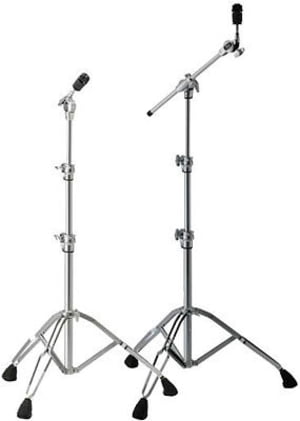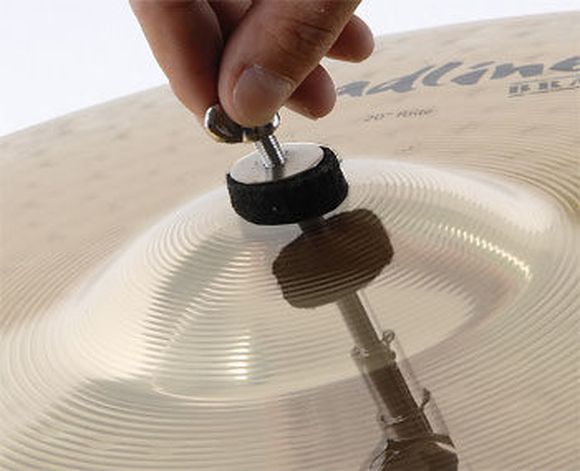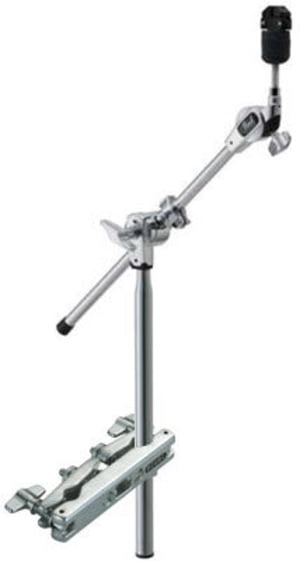4. Cymbal stands
Contrary to hi hat and kick pedal a cymbal stand does not move. In an ideal world they dont J.
The job of the cymbal stand is, well you know it already, to hold one ore more cymbals. Good cymbal stands are double braced. This makes them strong and also makes for a low centre of gravity they dont tip so easily.
The telescopic tubes of the stand should run in plastic bushings. When you fasten the screw you dont damage the chrome and nothing rattles. The bigger the gauge of the tube, the heavier the stands get, obviously. This is a good thing (but for the guy who has to carry it to a gig ) Strong hardware not only stands better but also offers space for expansion (toms boom arms braces) connected with a multi clamp. The more you attach to a stand the more crucial is its stability.
To avoid contact between the cymbal and the stand a felt ring is put on top and below it. The screw itself should have a rubber or plastic cover to protect the cymbal from key holing and rattling. These plastic covers do not last for ever and should be replaceable.
Straight stands
With this type you can adjust only the height. The straight stand is mostly used for the ride cymbal since it sits relatively low. Placement is easy and the centre of gravity is exactly over the legs of the stand it does not tip easily.

Straight and angled boom stands
Boom stands
On a big set you might use a lot of crash, splash or chinas. These cymbals need a placement that accommodates the drummer deeper into the set. The ideal candidate for this is the boom stand. On the top end of the stand you have a joint with a boom arm attached. This way the cymbal can be moved away from the actual stand, closer to the drummer. The boom stand offers better adjustability because of the extra joint. The boom arm itself can obviously be turned also.
One problem with boom stands is balance. Because the cymbal is positioned outwards, the centre of gravity also moves to the outside. The stand tips more readily now. You dont want this to happen of course. As a counter measure the base of a good boom stand is built extra solid. The radius of the legs matches the extension of the boom arm. Double brace is standard and some models have a counter weight on the off side of the boom arm. Nevertheless you have a problem with very heavy cymbals and you might put an extra brace on the stand.
Most of all this problem occurs on a double boom stand. You really should only buy the most rigid makes here. Double boom stands are best suited for smaller cymbals. A 14 crash and a 10 splash are just perfect here. For the heavy guns, a 18 china for instance, you should use a single boom.
Boom arms
For a splash cymbal you can connect a boom arm to a stand using a multi clamp. The forces on the hardware are not too high and it saves precious leg space.








